WASHINGTON UNIVERSITY IN ST. LOUIS

It was raining iguanas on a sunny morning.
Biologist James Stroud‘s phone started buzzing early on Jan. 22. A friend who was bicycling to work past the white sands and palm tree edges of Key Biscayne, an island town south of Miami, sent Stroud a picture of a 2-foot long lizard splayed out on its back. With its feet in the air, the iguana took up most of the sidewalk.
The previous night was south Florida’s coldest in 10 years, at just under 40 degrees Fahrenheit. While most people reached for an extra blanket or a pair of socks, Stroud — a postdoctoral research associate in Arts & Sciences at Washington University in St. Louis — frantically texted a collaborator:
“Today’s the day to drop everything, go catch some lizards.”
When temperatures go below a critical limit, sleeping lizards lose their grip and fall out of trees. From previous research, Stroud and his colleagues had learned that different types of lizards in Miami can tolerate different low temperatures, ranging from about 46 to 52 degrees Fahrenheit, before they are stunned by cold. This cold snap provided a unique opportunity to understand how they are affected by extreme climate events.
But when the researchers collected the scaled survivors of that coldest night, they discovered that the lizard community responded in an unexpected way: all of them could tolerate cold temperatures down to about 42 degrees Fahrenheit, regardless of their species’ previous ability to withstand cold. The findings are reported Oct. 21 in the journal Biology Letters.
“Prior to this, and for a different study, we had measured the lowest temperatures that six lizard species in south Florida could tolerate,” Stroud said. “We realized after the 2020 cold event that these data were now extremely valuable — we had the opportunity to re-measure the same lizard populations to observe if their physiological limits had changed; in other words, could these species now tolerate lower temperatures?”
In the days that followed the January cold snap, researchers collected representatives of as many different kinds of lizards as they could find in the local area, rounding up small and large lizards and those that are active during the day and at night. Then the researchers tested their response to cold.
“A major unexpected result of this study was that all species converged on the same new, lower level of thermal tolerance,” Stroud said. “While there was great variation in temperature tolerance before the cold event — some, like the large-bodied brown basilisk, were very intolerant of low temperatures, while others like the Puerto Rican crested anole were more robust — we observed that all species could now tolerate, on average, the same lowest temperature.
“Given great variation in body size, ecology and physiology, this was unexpected,” he said.
Only one of the species in the study is native to the area; the rest have been introduced to Florida over the past century, researchers noted.
The results provide evidence that tropical, cold-blooded creatures — often characterized as unable to withstand rapid changes in climatic conditions — can sometimes endure conditions that exceed their established physiological limits.
“The shifts to tolerate significantly lower temperatures that we observed were so large that we found it unclear whether natural selection was responsible,” Stroud said. “And so in our paper we discuss other alternative processes which may also have led to this pattern.”
“The results of this study are surprising and unexpected. Who would have thought that tropical lizards from places like Puerto Rico and Central America could withstand temperatures near freezing?” said Jonathan Losos, the William H. Danforth Distinguished University Professor and professor of biology in Arts & Sciences and director of the Living Earth Collaborative at Washington University.
“What we now need to find out is how this was accomplished. Is this evidence of natural selection, with those lizards that just happened to have a lower cold tolerance surviving and others freezing to death, or was it an example of physiological adjustment — termed ‘acclimation’– in which exposure to lower temperatures changes a lizard’s physiology so that it is capable of withstanding lower temperatures?”
Regardless of the underlying mechanism, the new study provides a critically important piece of information for understanding the impacts of climate change.
Scientists expect that air temperatures will gradually become warmer under climate change, but also that temperatures will become more chaotic.
Events that spike temperature to extremes — both exceptionally hot and exceptionally cold episodes — will increase in frequency and magnitude. As such, it is important to understand both the effects of gradual, long-term increases in air temperatures as well as the consequences of abrupt, short-term extreme events.
“It is widely thought that tropical and subtropical species are going to be especially vulnerable to changes in temperature — particularly extreme spikes of heat or cold — as tropical areas do not typically have strong seasons,” Stroud said. “Unlike temperate species, which are adapted to summer highs and winter lows, tropical species have typically evolved in very thermally stable environments.
“While there is no doubt that climate change represents a major threat to species and ecosystems around the world, and deserves as much research attention as possible, this study provides fascinating insight and a glimpse of hope,” he said. “Perhaps tropical and subtropical species can withstand more extreme climatic conditions.”
###
Why not name cold cold ?
And why not look for the reasons, f. e. are the lezards producing some antifreeze ot at least frostcontrol ?
I think it’s not such a shock. Some frogs can become frozen in a pond ice, and “come back to life” when thawed out on a sunny day. Aren’t they all amphibians? People as a whole in their thinking are always comparing the constitution of other species to their own fragile sacks of blood. Often wild creatures are far more robust than we think.
The Komodo Dragon lizard, for example, carries billions of highly toxic bacteria in it’s mouth yet they are harmless to Komodo Dragon lizards. One nip however of the Dragon’s teeth, and the toxic bacteria will lay low a feeble Human in short order. The Dragon follows you until you are too weak to carry on, then devours your already rotten flesh, teeming with toxic bacteria, from your aching bones.
…. (was that too graphic, Charles? … Its just the truth that namby pambyism hides from the Public)
Do they get fries with that?
No lizards are amphibians
I think AOC is technically a mammal.
The cold adaptation is not likely “anti-freeze” production.
When our hands gets cold, and our fingers feel stiff and barely able to move, it is because the voltage-gated channels in our neurons that carry action potentials and then signal across the neuro-muscular junction open and close more slowly. And we are “warm-blooded” mammals. If our bodies actually got anywheres near as cold as those “cold-blooded” iguanas, we too would be “cold stunned” and unable to move.
ADARs are conserved across all metazoans. These are ancient RNA editing enzymes involved in processes that provide a huge level of complexity in adaption of RNA sequences that code for proteins, and allow for rapid, short-term small, but vital changes to protein sequence expression without altering the underlying genetic code in the genome of the organism.
What the lizards physiology is doing is likely a very ancient molecular adaption of the proteins in the voltage-gated channels. In a post-transcriptional process of the RNA that codes for protein synthesis by ribosomes, an enzyme called ADAR in the lizards neurons molecularly “edits” selected adenosines (A) to inosine (I). Inosine then is read as a guanine (G) nucleotide by the tRNA of the ribosome. Thus a different amino acid is inserted in the growing peptide chain. This amino acid alteration of the sequence is called a “non-synonymous” substitution by biologists.
Thus it is believed a number of non-synonymous [ A –> I ] RNA changes in the mRNA adapts the new voltage gated channels to operate at lower temperatures over a period of a week or so by ADAR expression in the iguana’s neurons. The iguana becomes adapted to slightly lower temperatures by altering the acid acid composition of certain amino acids in its sequence. Then when the temps warm back up, ADAR expression in the neurons diminish and the A –> I editing stops. Then as the voltage gated channels trun over (now ones replace older proteins) the voltage-gated channels in the synapses return to their native codons expression sequences.
Because if they want to study high temperature adaptability also with premise critters may adapt they wouldn’t get money. So they use other jargon to sneak by gatekeepers.
“Scientists expect that air temperatures will gradually become warmer under climate change, but also that temperatures will become more chaotic.”
Aren’t a “warmer planet” (thus, a decrease in the temperature’s gradient between tropics and poles) and “more chaotic temperatures” somewhat contradictory ?
Of course it’s contradictory. But when faced with record cold, what other choice do the warmunists have but to evoke Climate Change?
After all, that’s why Global Warming became Climate Change in the first place.
Damn auto-corrupt!
Invoke
“Scientists expect that air temperatures will gradually become warmer….”
Which “scientists” are these ?
Like it or not The Sun, Olde Sol, regulates Earth’s temperatures, and yet “Lizard man” cannot even believe the evidence of his own eyes. Lizards dropping out of the trees, chilled with the “record cold” in Florida !
We are heading into a well documented Solar Minimum, and “scientists believe” in reality that air temperatures will gradually, or not so gradually become colder. We could see another “Dalton minimum” for several hundred years, and we still don’t really know what did cause the Younger Dryas event. We might even see another. Then it won’t just be lizards dropping out of the trees, and not just in Florida either !
There’s Always The Sun … listen to those lyrics … When was this written? The Stranglers had it sussed long ago !
[code]https://www.youtube.com/watch?v=cYQTL-ws6p4[/code]
Oops …
Fascinating. Apparently, this video is not available in the USA.
Maybe it mentions Hunter Biden?
I hear that Papa Joe (aka The Big Guy) doesn’t recognize that name any more.
It has been expunged from his teleprompter, probably.
“Like it or not The Sun, Olde Sol, regulates Earth’s temperatures…We are heading into a well documented Solar Minimum, and “scientists believe” in reality that air temperatures will gradually, or not so gradually become colder.”
No they don’t, they see no reason why global temperature will not continue to rise for decades to come, so the exact opposite. What the scientists actually believe is the above just another species of ‘anything but CO2’ wishful thinking. Your “Olde Sol’s” 11 year average output peaked 70 years ago and has fallen more or less steadily since; a barely detectable 0.05% over that time.
Falling insolation but rising temperature and not even a correlation…
https://climate.nasa.gov/climate_resources/189/graphic-temperature-vs-solar-activity/
You might want look to other sources of forcing that are at least correlated because this is just wishful thinking.
Loy do you have ANY EVIDENCE AT ALL that CO2 causes warming
Or are you still in your little make believe world
https://www.youtube.com/watch?v=0s_YFLI4G1M
30 year running average of TSI (according to you priestesses, 30 years is “climate”)
You are a spreading mis-information as always … loy !!
AMO, PDO vs NH temperatures

AMO vs Reykjavik temperatures
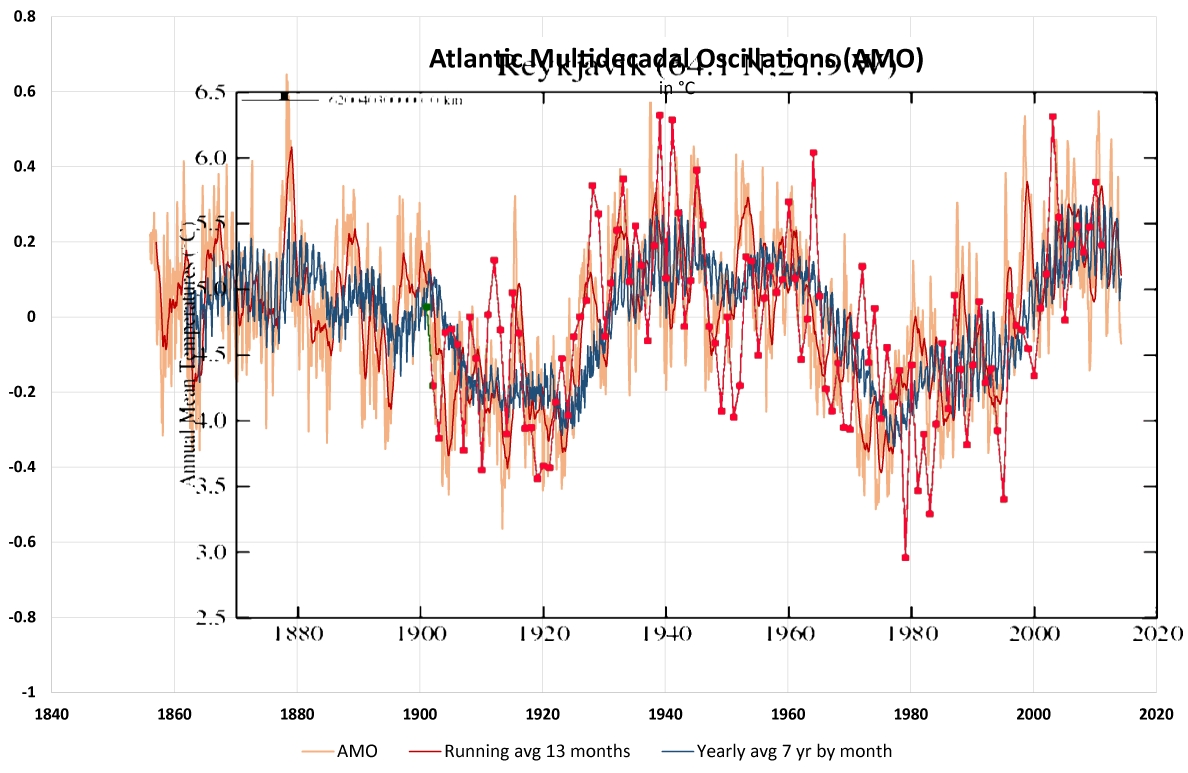
Solar vs CET

https://notrickszone.com/2020/10/22/new-study-finds-a-robust-link-between-european-temperatures-and-solar-activity-via-amo-nao-modulation/
You are a scientific ABYSS, loy !
TSI vs NH temps (non urban)

CO2 vs UAH 2001-2015
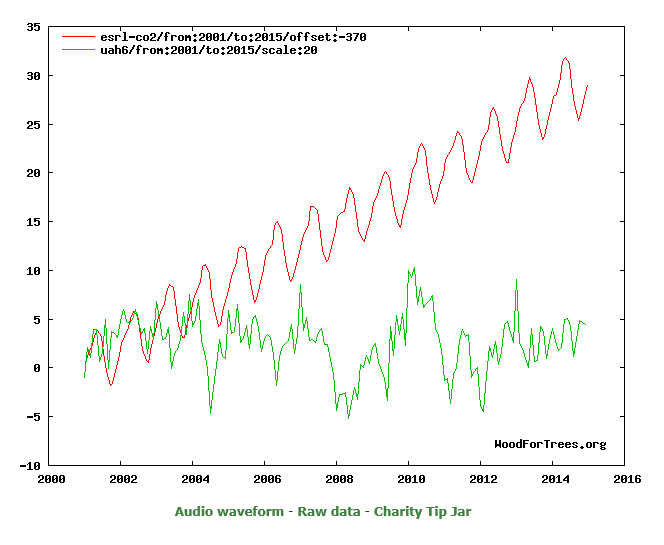
CO2 vs GISP, Holocene.
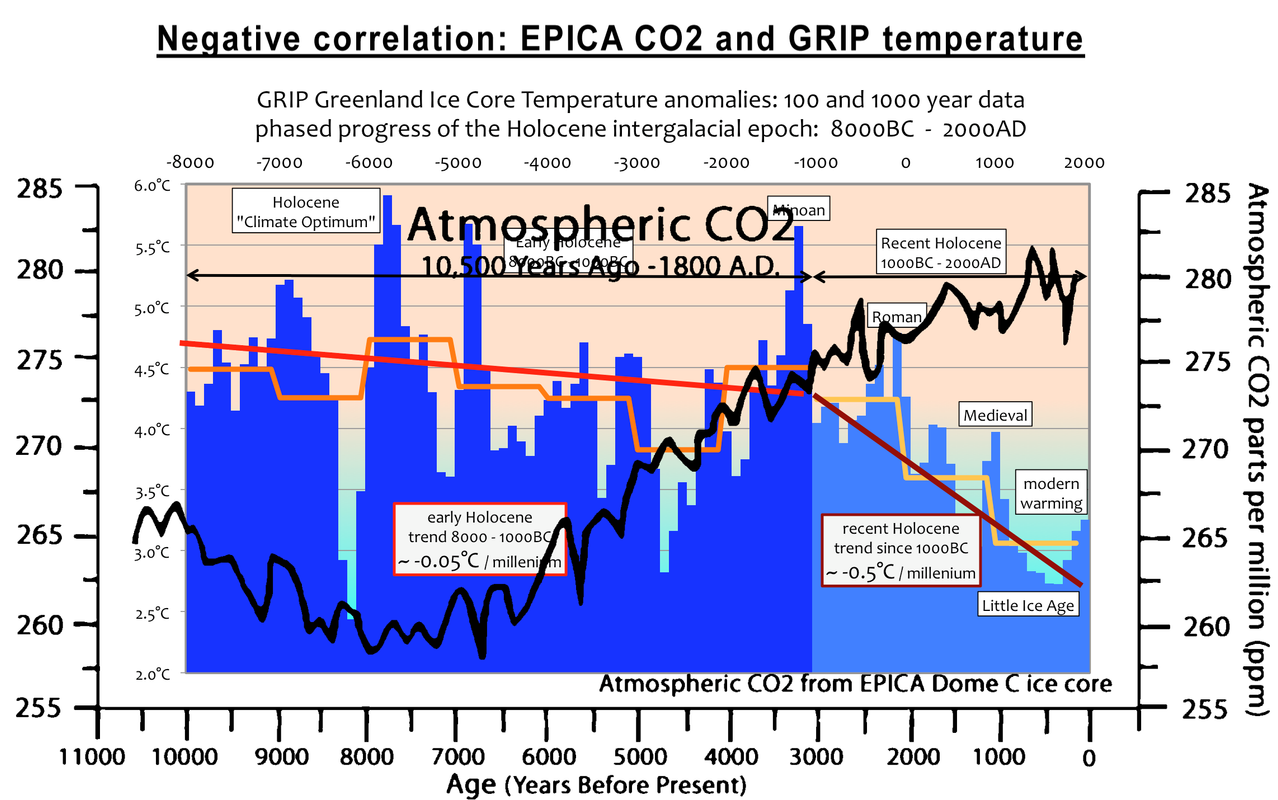
You’ve got NOTHING, Loy
Just a FAILED non-scientific conjecture/fantasy.
Let’s try those 2 questions again, Loy
Watch you “duck and weave” or will it be “run and hide” 😉
1… Do you have any empirical scientific evidence for warming by atmospheric CO2?
2… In what ways has the global climate changed in the last 50 years , that can be SCIENTIFICALLY proven to be of human causation?
And NASA’s temperature fabrication is a JOKE, even you must =know that.
Its been DELIBERATELY mal-adjusted to rise due to CO2
This graph shows the CHANGES made.

And in the USA, the CHANGES are almost a perfect linear match to CO2
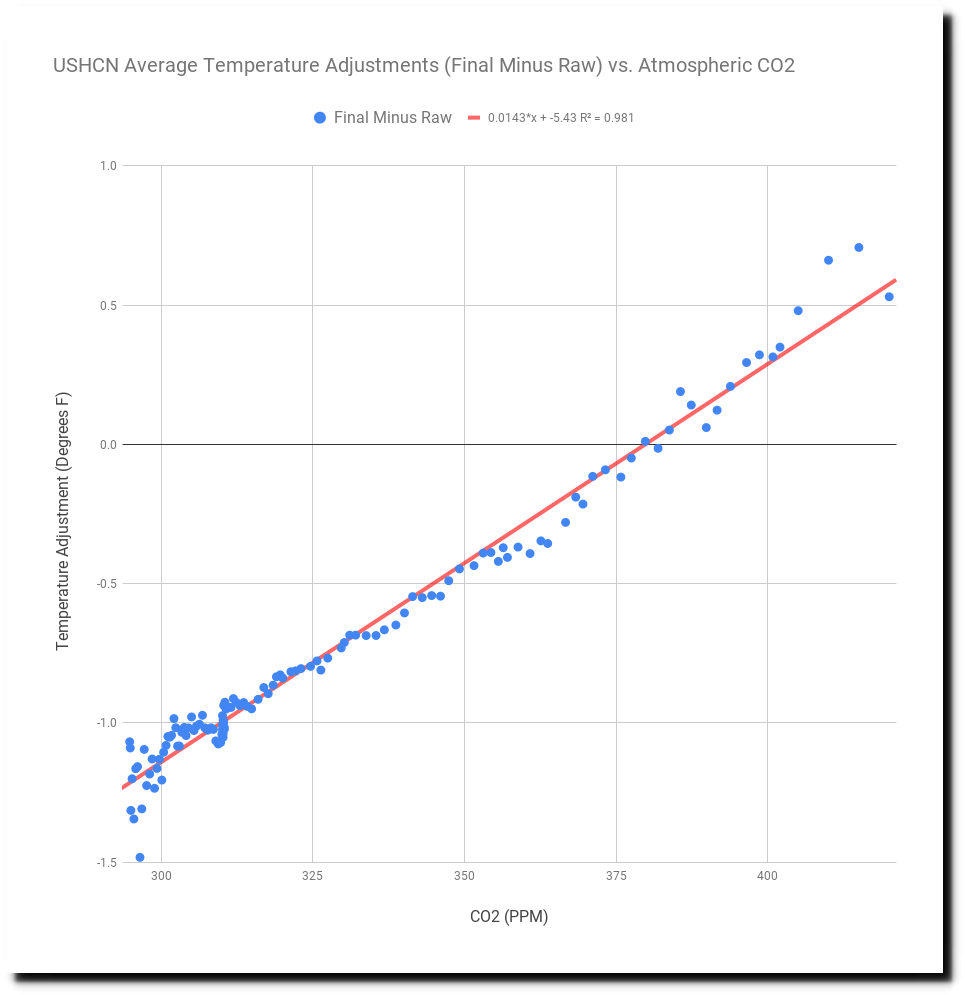
Fraud doesn’t get much more obvious that that !!!
No matter how many shouty, unhinged rants replete with mickey mouse graphs you post, you are going to convince me falling TSI has caused modern global warming.
Yes, you are destined to remain totally ignorant.
That is your choice completely.
Data means nothing to you.
Now, are you going to answer the question, or just keep up your idiotic, science-free climate denial ?
1… Do you have any empirical scientific evidence for warming by atmospheric CO2?
2… In what ways has the global climate changed in the last 50 years , that can be scientifically proven to be of human causation?
Sorry you are unable to comprehend basic graphs taken straight from actual real data.
Again.. you have pointed out just how ignorant you really are.
If you had the capability, you could reproduce those graphs.
But you don’t.
You are scientific and mathematical ignoramous.
The really UNHINGED person here is the one that just “BELIEVES” in his little fantasy,
…. but has absolutely zero evidence for his baseless belief.
Then DENIES all evidence that points to one of the real causes.
That is truly twisted, logically, rationally and mentally.
You do know that the ONLY real warming in the last 50 years has come at El Nino events, don’t you???
Or are you going to DENY that fact as well ?
Have you seen what ENOS 3/4 is doing !
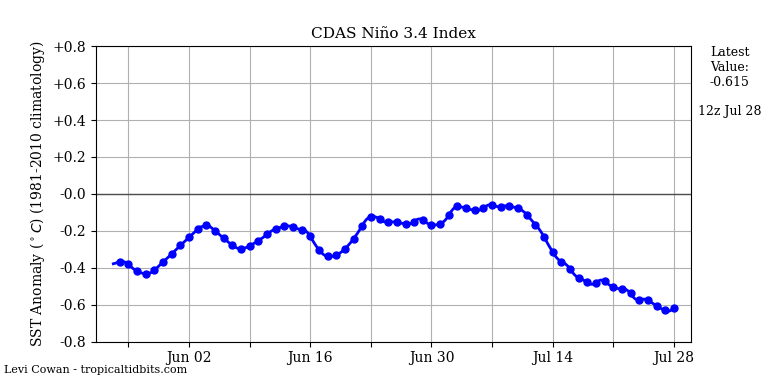
Or don’t you comprehend basic graphed data ?
“the ONLY real warming in the last 50 years has come at El Nino events,”
Mmm, tell us more. Graphs, lots of graphs, but don’t start them before 1997.
Great that you admit 1997/8 was an El Nino .. maybe you are capable of learning after all !!
Did you know the only warming since the late 1970s has been at 1978/9 El Nino, the 1998 El Nino and the 2015 El Nino
There was NO WARMING between these events
No warming from 1980-1997

No Warming from 2001-2015
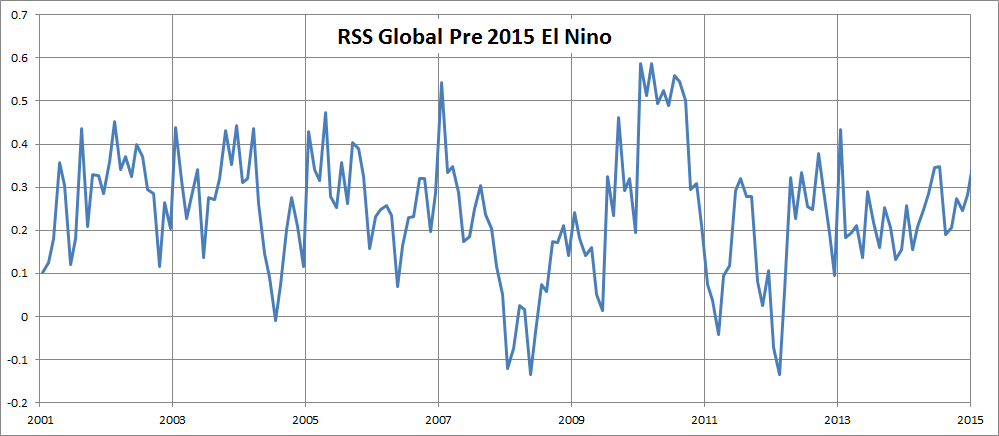
No-one can help you overcome your climate denial if you won’t let them help. !!
Now, try again, little muppet
1… Do you have any empirical scientific evidence for warming by atmospheric CO2?
2… In what ways has the global climate changed in the last 50 years , that can be scientifically proven to be of human causation?
The more you duck and weave , the funnier it gets 😉
come on Loy, at least TRY to educate yourself.
http://appinsys.com/GlobalWarming/The1976-78ClimateShift.htm
You don’t really want to be dumb and ignorant ALL your life, do you ???
Loydo – you’ve just demonstrated WHY you and your ilk have nothing but predetermined opinion, and why you always make the best, most absolute bigots.
The new Hitler-youth – and even MORE self-righteous – and a thousand times as cowardly.
Joel,
They used to call them “apologists” or “collaborators”
Basically they are TRAITORS to human decency and life.
Falling insolation ?
In what world do you live ?
<a href="http://www.climate4you.com/images/HadCRUT3%20and%20TropicalCloudCoverISCCP.gif" what's about that example ?
I love that song. It brings back memories of my younger years. These days whenever I hear it I actually say to my wife “Whenever you run out of research projects, There’s Always the Sun”! She sort of understands my twisted mind.
“Scientists expect that air temperatures will gradually become warmer under climate change, but also that temperatures will become more chaotic.”
Chaotic…oh that sounds scary.
Really, which scientists? Any reference for this statement?
Political scientists. You can’t really expect them to make a quantitative prediction – pardon, a projection – when temperatures go chaotic.
Does anybody really REALLY care…..
Since when is 42F is near freezing?? Yeesh…
Spend a winter up north and find out what near freezing means….
Yes that what happens when it warms up, you get near freezing, up north around 0 F is the normal average temp for most of December January and February, with dips into high of the -20 F. That why I now live in Arizona.
Lizards are adapting to lower levels of cold tolerance. They know, man, they know. Hell is going to freeze over and ruin my vacation.
“Events that spike temperature to extremes — both exceptionally hot and exceptionally cold episodes — will increase in frequency and magnitude,”
The warming we’ve seen in the last century (1 C) has occurred mostly in winter and overnight temperatures, not so much in summer temps. A slight warming in winter makes extreme cold episodes less likely, not more. There is NO evidence that any weather phenomena has gotten more extreme. Even the alarmist religion’s bible says so (IPCC). The authors clearly felt it necessary to somehow link their study about natural adaptation to cold events to global warming (probably funding related) so they fabricated this statement. Peer review in Biology Letters is obviously dead.
The Inuit ( Eskimos ) have genetic variation that allows them to produce more brown fat with helps withstand the cold through thermogenesis.
Nobody has ever been able to swim across English channel in the winter. A few years ago someone attempted it in early Dec but only lasted 3 hours before giving up. Water about 10 degrees Celsius then. Latest successful attempt was early Nov.
I was thinking an Inuit that was very fit and a good swimmer might be able to do it, if the brown fat really can produce enough heat.
It’s the term ‘scientists expect’ that somehow grates.
Not sure why, but, I’d rather hear about what ‘scientists KNOW’ and *not* what they expect
Expecting isn’t science – anybody can ‘expect’ anything at *any* time – ‘expect’ being another word to describe ‘want’
Certainly they. as someone said, they expect = want: More Funding.
Shouldn’t the old adage “He Who Wants Never Gets” apply here – as usually applied to petulant brats throwing tantrums in toy-shops.
So, global warming can result in cooler temps too – got it. Someone should have gathered those liz up and fed ’em to the sharks….sharks will eat anything.
Certainly the non-native species. Actually, it should be a Jr H/HS project to round up all the stunned lizards on cold days and turn them over to animal welfare. Those that are native get released when they revive and all the other become shark bait.
Or exotic food creations at high end restaurants.
“So, global warming can result in cooler temps too – got it.”
Oh, yeah! Human-caused global warming can cause anything! So as not to confuse the public, the alarmists changed to using Human-caused climate change instead of global warming, and then that way, they can apply their scaremongering when temperatures get cold, too.
Clever wordsmiths, aren’t they.
The biochemistry of this rapid physiological adaptation is hypothesized to be a post-transcriptional adaptation via the ADAR family of deaminases. Deaminases alter the adenosines (A) in RNA to inosine (I) and thus affect the mRNA codon read-out upon translation by ribosomes to a protein.
In a nutshell, ADARs expressed in the nervous system neuronal cells alters mRNA in the metazoan nervous system. One really needs an advanced training in RNA-protein translation biochemistry and/or molecular biology to really get a grip on what is happening on neuronal junction voltage gated channels in the nervous systems that makes these cold-blooded lizards either susceptible or adapted to cold temperatures. So these lizard ecologists probably are out of their league unless they team up with hard-core RNA biochemists and neurobiologists to understand how these lizards adapted so quickly.
(Sequencing mRNA (the transcriptome) is not easy when deaminases are involved. But B-cell immunologists have been sucessfully dealing with this biochemistry problems for decades studying DNA cytosine deamninases in B cells).
Cold weather exposure in these lizards is somewhat like the viral interferon response response in mammamls, i.e. it drives a fast acting ADAR response. ADAR then generate new variants of proteins. In the nervouse system of cold-blooded lizards this could mean generation of voltage gated channels in their neuronal synapses that are more low temperature tolerant. A rapid response to environmental adaption at the biochemical level.
What is ADAR???
ADAR: adenosine deaminase acting on RNA (ADAR). ADARs participate in the modification of specific adenosines in pre-mRNAs of proteins involved in electrical and chemical neurotransmission, including pre-synaptic release machineries, and voltage- and ligand-gated ion channels. Most RNA editing sites in these nervous system targets result in non-synonymous codon changes in functionally important, usually conserved, residues and RNA editing deficiencies in various model organisms bear out a crucial role for ADARs in nervous system function.
https://www.ncbi.nlm.nih.gov/pmc/articles/PMC3580408/
I am reminded of the Pika, which was adopted by the US government as a species to monitor because of their intolerance of warmer temperatures and therefore be an early warning of climate change and habitat reduction. Then it was discovered that there are warm-climate tolerant Pika’s. Oh well, more junk science. They still use the Pika as an indicator of climate change.
So I heard about this one guy in Florida who saw all these iguanas falling out of trees, stiff with cold, and put them in the back of his station wagon, thinking he’d take them home and warm them up. He’s got about 50 of these critters there in the back, on the back seats…
Out on the freeway, its cold, he turns the heating way up… and all the iguanas wake up and start panicking…
“as tropical areas do not typically have strong seasons,” Because water vapour damps out extremes. Compare them to neighbouring deserts, they have much higher Tmax and a very low Tmin. Water vapour REDUCES Tmax.
If WV is a positive feedback, it will only increase average temperature, by increasing Tmin a lot. It will not increase maximum temperatures, it reduces them.
WV, even as a positive feedback, exposes plants and animals to less extreme temperatures.
And ECS of 2 C is not a problem. An ECS if 4C isnt either.
A large amount of water vapor over the equatorial ocean raises convection to about 17 km, where the temperature of the cloud tops reaches -90 C (hurricanes).
“…south Florida’s coldest in 10 years, at just under 40 degrees Fahrenheit. ”
I was living in Miami in 1976 and temps dropped below freezing, 29 F, killing lawns and many tropical gardens. The previous winter it snowed in Tampa, 4″ of the stuff I moved to Florida to escape! Just under 40 F is not at all unusual for late October in south Florida.
Humans adapt to changes in climate, why not lizards? The first winter I lived in south Florida I went swimming in the ocean but after a year there, October, November, December felt very chilly to me and definitely not beach weather.
“I was living in Miami in 1976 and temps dropped below freezing, 29 F, killing lawns and many tropical gardens. The previous winter it snowed in Tampa, 4″ of the stuff I moved to Florida to escape!”
That was about the time some climate scientists were warning us that the Earth might be moving into another ice age.
But when the researchers collected the scaled survivors of that coldest night, they discovered that the lizard community responded in an unexpected way: all of them could tolerate cold temperatures down to about 42 degrees Fahrenheit, regardless of their species’ previous ability to withstand cold
I believe this is called “Darwinism” (AKA survival of the fittest)
I was late to this party and you’ve said what I was thinking.
The next step for Darwin was that when a habitat changes and the preferred food runs low then the animals migrate to a more hospitable location. These lizards will be heading south, looking for that elusive Global Warming!
If the data is correct, this information torpedoes natural selection below the waterline.
“Tropical areas do not typically have strong seasons”?
eh!?
Tropical areas do not experience daily highs or daily lows??
There is a suggestion that tropical highs and lows are not as extreme as temperate highs and lows…
Additionally, I am confused by the term “strong seasons”…
Is that a claim that temperate areas have “strong seasons”? In some bizarre use of the word “strong”?
Nowhere in the article do I read any results that indicate why Florida’s reptiles endured the chill weather.
Was it genetic, in that reptiles better able to endure cold survived and thrived?
Or was it adaptive behavior? Did reptiles that previously survived cold weather learn to move to protected locations or heat retaining surfaces, like roads and sidewalks?
Isn’t the Biden family from the Lizard Race? Or is that the Reptilians? I don’t want to seem racist, but doesn’t both work?